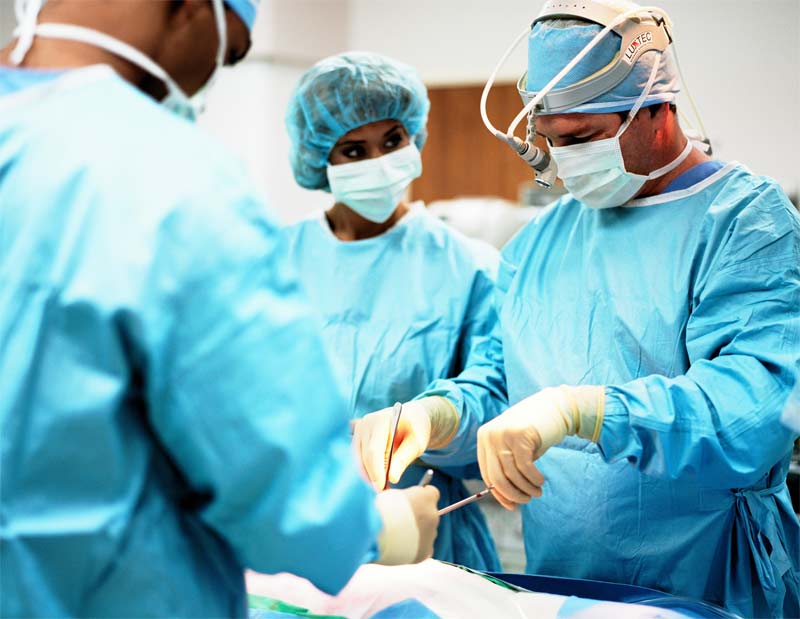Hemithyroidectomy
Hemithyoidectomy surgery removes of one of the thyroid lobes. It is the minimum surgical procedure for adequate treatment of a solitary thyroid nodule. This is a safe operation with a minimal risk of damaging either the parathyroids or the laryngeal nerves.
There are several indications for hemithyoidectomy surgery:
- Suspected thyroid cancer
- Compression symptoms
- Hyperthyroidism due to a solitary hyperfunctioning thyroid nodule
- Cosmetic reasons such as an unsightly lump in the front of the neck
Hemithyroidectomy surgery goals
To make an accurate diagnosis by sending the whole thyroid nodule for pathology testing; to relieve pressure and compression symptoms when a solitary thyroid nodule is pressing on the trachea and/or oesophagus; and to correct hyperthyroidism when solitary thyroid nodule is responsible for producing too much thyroid hormone.
Anaesthesia for Hemithyroidectomy
- Hemithyroidectomy is routinely performed under general anaesthesia
- The anaesthetic is given by a specialist Anaesthetist
- Modern anaesthesia is safe, however, rarely serious reactions to anaesthesia occur
- If you have ever had a reaction to an anaesthetic drug tell your Anaesthetist and Surgeon
- Your Anaesthetist will be able to explain which anaesthetic is best and the associated risks and benefits
Thyroid Surgery Scar
A horizontal skin incision is made in one of the lower neck skin creases. The incision is routinely closed with dissolving sutures and then taped with micropore. With routine wound care including taping in the early post-operative period the scar usually settles to blend in with the skin creases.
After thyroid surgery – Hemithyroidectomy recovery time
The in-hospital length of stay after hemithyroidectomy is usually one night and the length of time off work is variable but often one to two weeks. Most people recover fairly quickly after hemithyroidectomy and resume normal activities within one to two weeks. A post-operative visit at two to three weeks is routine to review the results – you will need to contact the office to make an appointment for that visit. You will also need to be reviewed by your local doctor or endocrinologist at around 6 weeks and have thyroid function tests to check the function of your remaining thyroid.
Thyroid surgery wound care
After hemithyroidectomy your wound will be covered with a Steri-Strip, which should be left in place for about 2 weeks until your first postoperative visit – you may notice some dried blood under the tape but that is of no concern. You can wash and shower with the Steri-Strip in place and even get it wet. Once removed, the Steri-Strip may need to be replaced and you will then need to change it every 2 or 3 days for the next 2 to 3 months in order to get the best possible cosmetic result. The preferred tape is narrow, flesh coloured Micropore which can be obtained from your chemist.
Activities and exercise after thyroid removal
After a hemithyroidectomy you should generally restrict activities for 1 or 2 weeks after surgery. Activities, which involve turning the head suddenly, such as driving in heavy traffic, should be avoided. Commonsense is the best way to avoid straining your neck.
Throat symptoms after thyroid removal
- A variety of local symptoms are common for several weeks after hemithyroidectomy surgery and include neck tightness, or difficulty with eating and drinking
- Headaches and tiredness are also common as is weakness of the voice with prolonged use
- Swelling of the neck around the wound is also common and may benefit from daily massage with Vitamin E or Sorbolene cream
- Numbness of the skin above the wound may be present and may last for many months after thyroid removal
Hemithyroidectomy side effects
The main complication of concern is wound infection. Signs that this may have developed include the wound becoming very red, hot and more swollen. If that occurs you must seek attention from your local doctor straight away who will arrange for you to have antibiotics.
Weight gain after hemithyroidectomy is usually related to low thyroid function. If you have weight gain or any other low thyroid symptoms after hemithyroidectomy see your doctor who will arrange thyroid function tests and thyroid hormone replacement as needed.
Hemithyroidectomy post op follow-up
Generally your follow-up after hemithyroidectomy will consist of:
- A visit to your surgeon at 2 to 3 weeks to have the tape removed – you will need to ring the office to make an appointment for that visit
- A final surgical check up at 3 months
- If you have been placed on calcium supplements, you may need to be seen by your local doctor on a weekly basis to have a blood test to check your calcium level, and to have your calcium supplements progressively reduced
- You will also need to be reviewed by your local doctor or endocrinologist at around 6 weeks and have thyroid function tests to check the function of your remaining thyroid
- Your local doctor or endocrinologist may need to see you more frequently for specific review if there are any problems
Calcium Supplements
A temporary drop in calcium levels may occasionally occur even after hemithyroidectomy. The calcium level is checked in hospital and if it is low, you will be sent home on calcium supplements (Caltrate). You will then need to see your local doctor every week to have the calcium levels checked. If the calcium level in the blood is normal, then the dose needs to be reduced.
If you have any questions or concerns following your thyroid surgery, you should speak to your local doctor, who will arrange to contact your thyroid surgeon.

